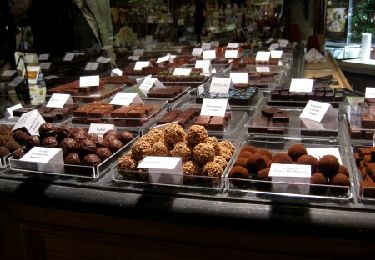

Our tour around the ''quiet Bruges'' starts in the former Hanseatic quarters. Here, along one of the main canals crossing the old town, ships used to come to anchor, as to be unloaded and re-loaded. It is also here that taxes were to be paid... Even if today a nonchalant atmosphere prevails, you can perhaps still figure out the living quays and streets at the time... The Hanseatic area of Bruges was one of the most alive and busiest areas in the town during the ''Golden Age'' of Bruges, between the 13th and 15th century.
Here was the commercial hub between the Hanseatic cities in the North of Europe, Germany and England, and other commercial centres in the South of the continent, in France, Italy and Spain. Many rich merchants came to settle in the area, or had their representatives present here: the Spanish left a few names behind ('Spaanse Loskaai' (Spanish Quay), 'Spanjaardstraat' (Spanish Street), 'Spinolarei' (Spinola Canal), etc.), and so did also the English and the Scottish.
There where the canal comes to an abrupt end, you can find a little square with the statue of Jan van Eyck, one of the most-famed Flemish artists.

Walking


User